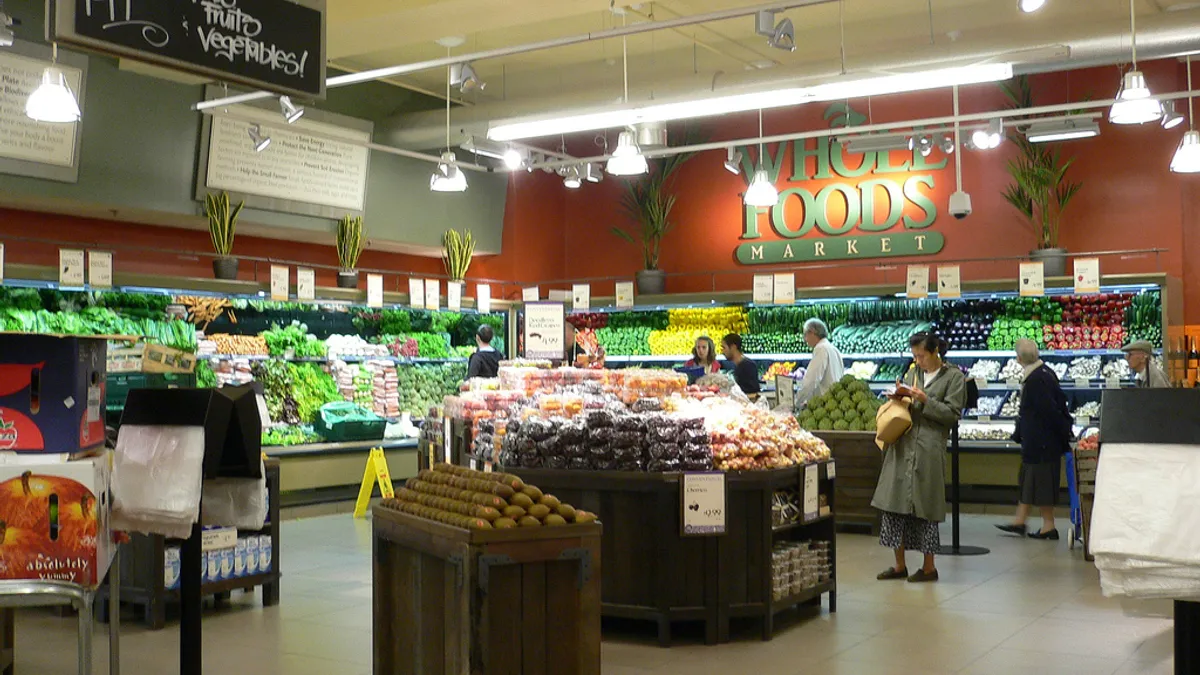Dive Brief:
- Despite Amazon’s intentions to reduce prices at Whole Foods since it took over, Gordon Haskett Research conducted a year-long analysis of the grocer’s prices and found that they remain relatively unchanged – even with Prime discounts.
- Analysts conducted a price test on a $400 basket of 108 grocery items. The tests took place several times from August 2017 to August of this year. When the final price test was conducted last month, analysts found that the total basket of items was only $1.50 less than it was a year ago when they began their research.
- Modest inflation and fuel prices may have driven prices up, but ultimately there is a sense that Amazon has not delivered on its pledge to reduce Whole Foods prices. Items in the basket included Whole Foods 365 brand peanut butter, Cheerios and an Amy’s Breakfast Tofu Wrap.
Dive Insight:
While there were significant price cuts when Amazon acquired the grocery store last year — such as 27% price drops on eggs, milk that was 50 cents cheaper and major discounts on Thanksgiving turkeys — it appears that prices have crept back up or stayed the same.
These findings are a big step in holding Amazon accountable for its plans to make Whole Foods more affordable, but while the industry observers have noticed, the big question is whether or not customers have. Amazon has announced several promotions for shoppers at Whole Foods, most notably special discounts for Prime members, who have flocked to the stores. The promise of lower prices – even if they are minimal – has drawn more people to Whole Foods overall, and customers do not appear to be concerned. At least not yet.
It will be interesting to see how this plays out over time. Both Whole Foods and Amazon have relatively loyal shoppers, and as long as they feel like they’re getting a deal, pricing may not be a concern. On the other hand, if enough buzz surfaces over Whole Foods pricing, customers may demand better when they realize not much has changed.
Prime is a huge factor in this discussion. Currently, there are estimates that around 40% to 60% of U.S. households have Prime memberships. This means that the same range of households does not have Prime, and Whole Foods is a great place for Amazon to promote it. It’s hard to ignore the “Prime” signs now on display at Whole Foods that promise better pricing for members, and even those people who aren’t frequent Amazon shoppers may buy into Prime if they believe it will save them money at their favorite grocery store.
To offer a somewhat cynical perspective, discussion of price cuts may be nothing but a brilliant marketing ploy by Amazon to secure more Prime members. Traffic at Whole Foods continues to increase, and it’s highly likely that Prime memberships will follow suit.









